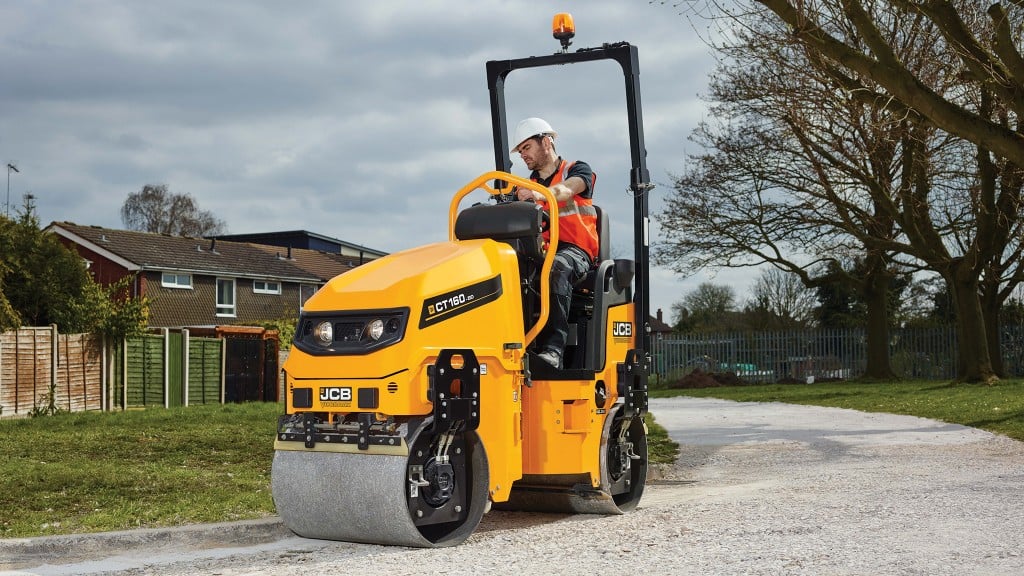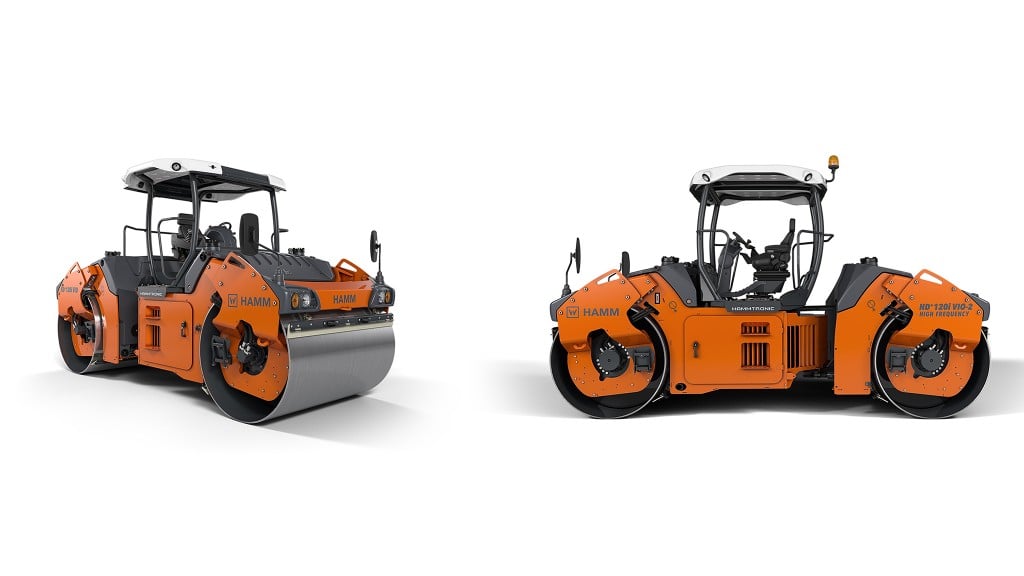
JCB is returning to the North American asphalt paving market with a pair of new tandem rollers. The CT160 and CT260 rollers will carry a familiar brand name – Vibromax.
"The machines that we are reintroducing into the North American market are identical to what we've had in Europe for the past four or five years," says James Gill, JCB North America product manager for backhoe loaders, site dumpers, and compaction equipment. "We've been able to put those products through their paces and prove their performance and durability."
JCB acquired the German company Vibromax in 2005 and put the engineering expertise that came with the brand name into its products.
"JCB has a long and well-respected history in the compaction industry through the purchase of Vibromax. When we bought the company we acquired a legacy of knowledge – we are not entering the market with limited experience," Gill says.
JCB compaction machines bore the Vibromax brand through the mid-2010s when the company wound down its North American compaction business. Gill adds that JCB hopes the return to the familiar brand will rekindle previous relationships with contractors who have had a good experience with Vibromax machines in the past.
The CT160 and CT260 are the first step toward the release of a broader compaction product lineup for the region.
"We have programs underway to ensure that we have a full, extensive lineup, but it makes sense for us to introduce our products slowly," Gill says. "We plan to have a comprehensive lineup in the coming years."
Simple operation is an important design factor
Small and easy to transport, with weights ranging from 3,770 to 6,041 pounds, the CT160 and CT260 have been designed for simplicity.
"If these rollers are out on rental, anyone can get on them and find them easy to operate. They're simple to maintain, and they're simple to run. It's all about an easy proposition for anyone buying these products," Gill says.
Vibration settings - front drum, rear drum, or both – can be set with simple, intuitive switches on the control panel, easily operated even with gloved hands. Automatic settings turn vibration on and off under certain speeds, so that if an inexperienced operator is turning or reversing the roller there is no over-vibration in those areas, Gill explains.
An easy-to-use hand throttle is conveniently placed for operator access. Water use settings are simplified, with three settings – continuous flow, high flow, and low flow - to make it easier for operators to select what they need. The water tank for the rollers' pressurized water spray system is embossed and labelled to prevent confusion with fuel tanks.
Curves of design improve safety and visibility
Access to the operator's platform is safer thanks to the overall design and shape of the rollers. The body curves in toward the centre of the machine, making it easier to get up and down on wide steps. The seat helps reduce vibrations to provide a comfortable spot for operators who may be on the machine all day, Gill says.
The machine's shape allows it to maneuver more easily around job sites and provides better visibility for the operator, allowing a clear view to the edges of the drums and around the roller while it works. "It's important that the operator can see the whole drum, and make sure that they are compacting the exact area they need to get," Gill says. "That's not just for the safety of the people around, but also the safety of the environment that they're compacting next to – you will minimize damage by having that excellent visibility."
A manually adjustable offset on the front drum protects against damage to curbs and other obstacles, while the rear drum is flush with the chassis for easier work near obstacles. Chamfered drum edges provide a smoother finish.
Telematics provides an overview of roller utilization for owners
Targeting simplicity on the CT160 and CT260 means engineering for uptime and reducing problem spots, so the new rollers are less reliant on technology and more on ease of maintenance. The included JCB LiveLink telematics do provide a significant benefit to fleet managers.
"Particularly for rental customers, they can see the utilization of their machines, they know which products are in the market and which they are getting the best return on investment for," Gill says. "The end user wants to see how often it's being used, so they can know how many machines they will need for a job, how many hours they are going to put on them, and whether they can be relocated to other projects."
Gill expects JCB's new compaction machines to be focused on rental houses, as well as contractors who handle mid-sized projects such as parking lots and other commercial jobs, as well as residential paving work. Response from the industry has been strong since the machines were announced.
"When we had them in the first show, people would insist that we get details to them, saying ‘can I go to my local dealer right now and get information on this?'" Gill says. "We've had dealers from all over North America asking, ‘when can I get one?' It's been very positive."



